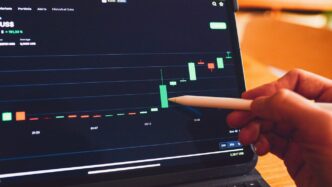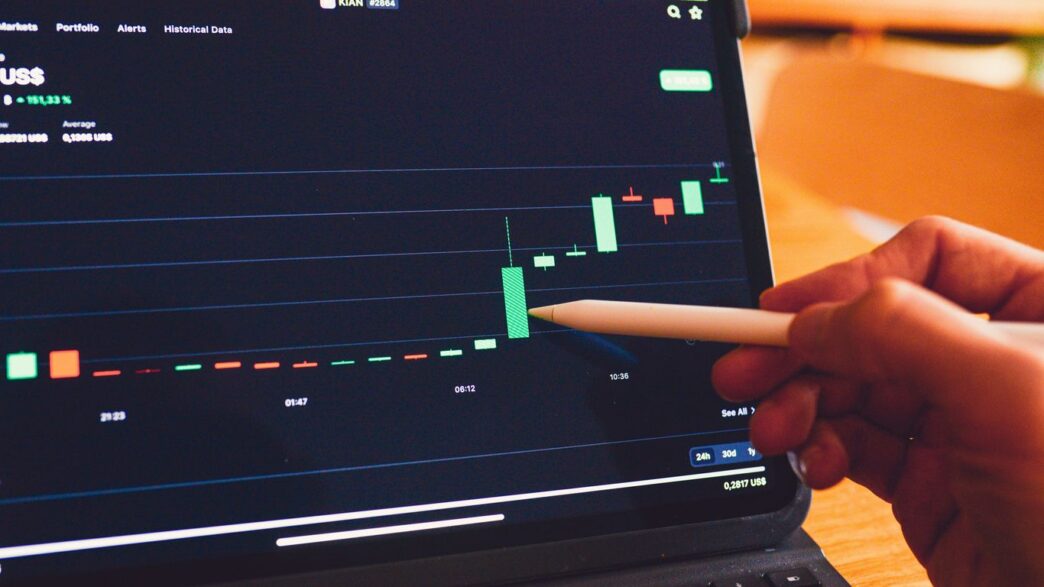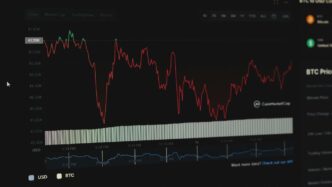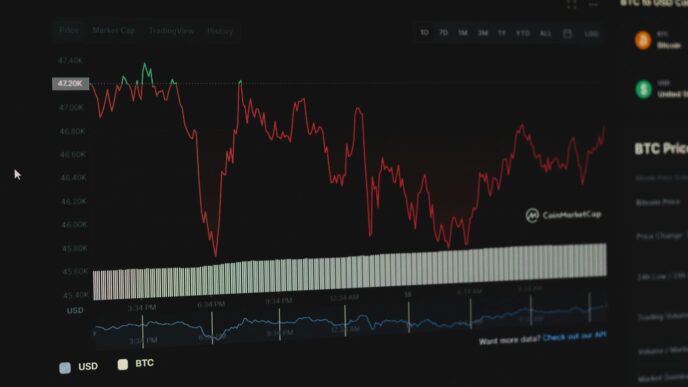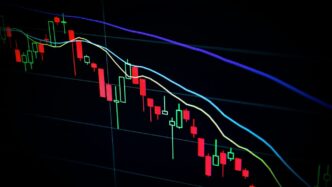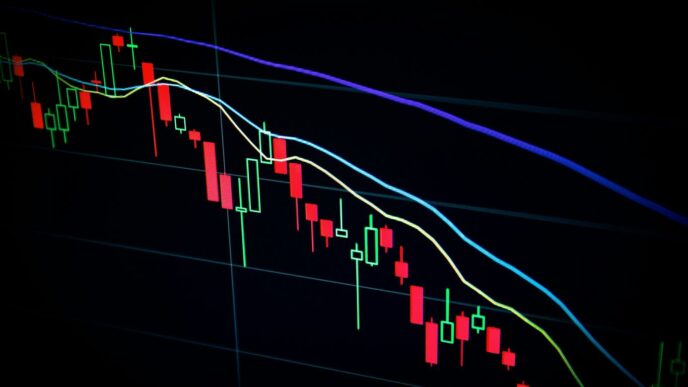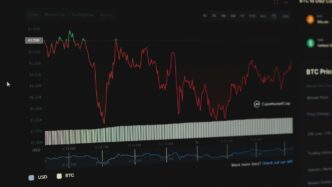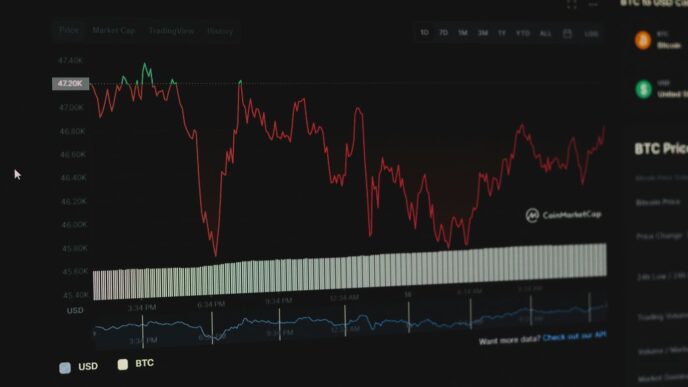If you’re looking for a simple way to invest, the vanguard etf list is a great place to start. Vanguard has a reputation for low fees and straightforward funds, which makes it popular with both new and experienced investors. With so many ETFs covering different markets, sectors, and income strategies, it’s easy to get lost in the choices. This article breaks down the top Vanguard ETFs for 2025, covering everything from broad market exposure to specific sectors and income options, all in plain language.
Key Takeaways
- Vanguard offers a wide range of ETFs, making it easier to build a well-diversified portfolio with just a few funds.
- Most Vanguard ETFs have very low fees, helping investors keep more of their returns over the long run.
- The lineup covers everything from the entire U.S. stock market to specific sectors, international markets, and bonds.
- Vanguard’s unique structure and ETF innovations help boost tax efficiency for investors.
- Choosing the right ETFs from the vanguard etf list depends on your goals, risk comfort, and how much time you plan to invest.
Vanguard ETF List for Core U.S. Market Exposure

Building a solid investment base usually means starting with ETFs covering most of the U.S. stock market. Vanguard is known for its focus on low-cost, broad-market ETFs, making them popular for both beginners and seasoned investors. Here’s a detailed look at different options to consider for mainstream U.S. exposure in 2025.
S&P 500 Index Tracking ETFs
If you just want exposure to America’s biggest companies—the household names, the tech giants, the steady blue chips—an S&P 500 tracker does the job. Vanguard’s main offering here is:
| Ticker | ETF Name | Expense Ratio | Sector Exposure | 10-Year Return (Annualized) |
|---|---|---|---|---|
| VOO | Vanguard S&P 500 ETF | 0.03% | ~30% Tech | 14.57% |
Key points:
- Designed to mirror the S&P 500 Index, including 500 major U.S. firms.
- Has strong tax efficiency—almost no capital gain distributions in years.
- Acts as a go-to for a "set and forget" U.S. equity position.
You can compare details about investment choices and analytics with the Equity Crowdfunding Analytics tool.
Total U.S. Stock Market ETFs
If you want more than just the biggest companies, the Total Stock Market ETF brings large-, mid-, and small-cap stocks together. Vanguard’s flagship pick is VTI:
| Ticker | ETF Name | Holdings | Expense Ratio | 10-Year Return (Annualized) |
|---|---|---|---|---|
| VTI | Vanguard Total Stock Market ETF | 3,000+ | 0.03% | 13.94% |
Notable qualities:
- Broader diversification than S&P 500 funds
- Still market-cap weighted, so big tech stocks lead the pack
- Covers every slice of the U.S. market, not just the top names
Comparing Growth and Value Strategies
Some investors want to tilt their core portfolios toward “growth” (innovative, fast-growing businesses) or “value” (more stable companies with lower valuations).
| Ticker | Strategy | Top Sectors | 10-Year Return | Yield | Expense Ratio |
|---|---|---|---|---|---|
| VUG | Growth | ~62% Tech | 17.10% | 0.41% | 0.04% |
| VTV | Value | Financials, Industrials | 11.56% | 2.12% | 0.04% |
Why choose one over the other?
- Growth ETFs (like VUG) can shine when tech and high-growth businesses are strong.
- Value ETFs (like VTV) might appeal if you want higher dividend income or think cheaper stocks are set for a comeback.
- Both have ultra-low fees compared to similar funds.
Most investors start with either an S&P 500 or total-market ETF, then tweak allocations toward growth or value based on market outlook, income needs, or risk comfort.
Top Vanguard Sector and Thematic ETFs
When you want to get specific with your investments, sector and thematic ETFs might be what you’re looking for. Vanguard doesn’t just stick to broad-index funds—they’ve got targeted ETFs too. Here’s a closer look at what’s available if you want to focus on certain industries or ideas rather than the whole market.
Technology-Focused Funds
Vanguard’s approach to tech exposure is a bit different from some rivals. There’s no single pure-play tech ETF, but you still get plenty of tech stocks in their growth-focused funds.
- The Vanguard Growth ETF (VUG) holds about 62% in technology, so it’s a practical way to lean into tech giants like Apple and Microsoft
- Technology is also a large portion of the Vanguard S&P 500 ETF (VOO), which is around 30% tech
- If you want a tech-heavy tilt without chasing trends, these funds give you that within a diversified package
Here’s a quick table comparing some numbers:
| ETF | Tech Weight | 10-Year Return | Expense Ratio |
|---|---|---|---|
| VUG | ~62% | 17.1% | 0.04% |
| VOO | ~30% | 14.57% | 0.03% |
Health Care and Consumer Sectors
With Vanguard, targeting health care or consumer sectors is usually done through their broader sector ETFs or by focusing on value/defensive strategies. For those who want more stability, classic defensive sectors like medicine and staples get decent weight in these funds:
- Vanguard Value ETF (VTV) leans into sectors such as health care, consumer staples, and industrials
- The Health Care sector alone makes up a significant percent of VTV — beneficial for people seeking stability
- If you’re after growth with a splash of health care, the Total Stock Market ETF (VTI) has you covered, just more spread out
Industrial and Financial Sector Coverage
Perhaps you’re interested in the industries that keep the economy running. Vanguard’s sector ETFs or their value funds often offer more exposure to industrial and financial names:
- The Vanguard Value ETF (VTV) again stands out, with solid weight in banks and companies like Johnson & Johnson (health care) and JP Morgan (financials)
- Industrials are well represented, especially if you add VTI to your mix for full market coverage
- These sectors tend to move differently from tech, so adding them can help balance a growth-heavy portfolio
In some ways, picking a focused ETF is a bit like choosing which part of the spaceship you’re most interested in—think about exposure, risk, and how it fits your goals. For a bit of inspiration, check out a story on new Virgin Galactic spaceship innovations—it’s proof that sectors with a theme can sometimes be at the forefront of change, both in the market and in the real world.
Vanguard ETF List for International Diversification

If you think your portfolio feels a little too homegrown—like it’s missing out on the rest of the world—international ETFs from Vanguard make it easy to fix that. Adding international funds can spread out risk, bring in new opportunities, and maybe even smooth out wild swings in US markets. Let’s look at some straightforward ways Vanguard helps you go global.
Total International Stock ETFs
Vanguard covers a lot with just a few tickers. Here are two go-to international stock ETFs:
| ETF Ticker | Name | Region Coverage | Expense Ratio |
|---|---|---|---|
| VXUS | Vanguard Total International Stock | Developed & Emerging Markets | 0.07% |
| VEU | Vanguard FTSE All-World ex-US | Developed & Emerging ex-US | 0.08% |
- Both ETFs skip any US stocks, so there’s no overlap if you already own S&P 500 or total US market funds.
- You get exposure to Europe, Asia, and some fast-growing areas like India or Brazil.
- These funds are huge, super-liquid, and usually trade within a penny or two of their net asset value.
Emerging Markets Exposure
Some folks want a bigger chunk of those riskier, high-growth countries—maybe you do too. Vanguard’s main option here:
- Vanguard FTSE Emerging Markets ETF (VWO): This one gives you companies in China, Taiwan, India, Brazil, and more, with over 5,000 stocks in the mix. The expense ratio is 0.08%.
- Why add it? Sometimes emerging economies grow faster (but they can fall faster too).
- Remember, these can see more price swings compared to developed markets.
Global Bond ETFs
Don’t forget about the other half of investing: bonds. Vanguard’s global bond funds help diversify beyond just US government or corporate bonds.
| ETF Ticker | Name | Hedged to USD | Expense Ratio |
|---|---|---|---|
| BNDX | Vanguard Total International Bond ETF | Yes | 0.07% |
| VWOB | Vanguard Emerging Markets Government Bond ETF | No | 0.20% |
A few things to note:
- BNDX covers a wide range of government and corporate bonds from outside the US and hedges away currency swings, so it moves more like a regular US bond ETF.
- VWOB is more "adventurous:" it sticks to emerging economies and does not hedge currency, so returns can jump around more.
All in all, mixing in international ETFs—both stocks and bonds—can make your portfolio sturdier for the long run, even if some years feel a tad rocky. Maybe not as exciting as picking the next hot tech stock, but probably a lot more reliable in the end.
Vanguard Fixed Income and Bond ETF Selections
Choosing the right fixed income fund from Vanguard can really help you control portfolio risk when stocks get jumpy. Here’s how some of the top bond ETFs stack up and what you need to know about them in 2025.
Total Bond Market Offerings
Total bond market funds from Vanguard are great if you just want broad, simple bond exposure. They own a mix of U.S. government, mortgage-backed, and investment-grade corporate bonds, so you’re not putting all your eggs in one basket. Their most popular fund in this space is BND (Vanguard Total Bond Market ETF), often used as the core bond piece in many portfolios.
| ETF Symbol | Name | Expense Ratio | SEC Yield* | Highlights |
|---|---|---|---|---|
| BND | Vanguard Total Bond Market ETF | 0.03% | 3.2% | Broad U.S. investment-grade bond exposure |
| BNDX | Vanguard Total International Bond | 0.07% | 2.8% | International bonds, currency hedged |
*Estimated for late 2025
Treasury and Government Bond Funds
Treasury ETFs are often considered the safest option, especially in uncertain times. Vanguard’s treasury and government ETFs focus on U.S. government debt, which makes them a go-to for conservative investors or folks looking to balance out stock risk.
- VGIT (Vanguard Intermediate-Term Treasury ETF): Holds Treasury bonds with maturities between 3 and 10 years.
- VGSH (Vanguard Short-Term Treasury ETF): Focuses on short-term government bonds (1–3 years), for even less volatility.
- VTIP (Vanguard Short-Term Inflation-Protected Securities ETF): Offers exposure to TIPS, which can help if you’re worried about inflation eating away returns.
High-Yield Bond ETFs
If you need more income and don’t mind taking a bit more risk, Vanguard’s high-yield and active bond ETFs give you a shot at better yields. These funds invest in bonds that have lower credit ratings but pay higher interest.
- The Vanguard High-Yield Active ETF (VGHY) is one of the newer options here, run by the Vanguard Fixed Income Group. This is an actively managed fund, so pros pick what to own rather than just following an index.
- VWEA (Vanguard U.S. High-Yield Corporate Bond ETF) is passively managed, tracking an index of below-investment-grade bonds, so expect higher yield along with more potential ups and downs.
A quick checklist for picking a bond ETF:
- Ask yourself if you want broad, diverse bond exposure or more targeted funds (like just Treasurys or high-yield).
- Consider how much risk you’re willing to take — government bonds tend to be safer, high-yield is riskier.
- Check the yield and expense ratio, since with bonds, even small costs can eat into returns over time.
Fixed income ETFs are less flashy than stocks, but when markets wobble, they might be the steady part of your portfolio you’re glad to have. Don’t ignore them just because they’re not exciting—they do a lot of the heavy lifting.
Leading Vanguard Dividend and Income ETFs
For folks who want a steady stream of income from their investments, Vanguard has a handful of ETFs that do the job well. Some funds focus on the highest-yielding companies, while others look for steady dividend growth. And for people who want income from bonds, there are choices, too. Let’s walk through the main options.
High Dividend Yield Strategies
If a high paycheck now matters most to you, the Vanguard High Dividend Yield ETF (VYM) is probably the first ticker to check. This fund holds over 500 blue-chip US stocks with strong and consistent dividend payments. It skips companies that haven’t paid over the last year and ignores most REITs.
Below is a snapshot of key facts for three popular income-focused Vanguard ETFs:
| ETF | Index Tracked | Yield (30-day SEC) | Expense Ratio | 10-Year Annualized Return |
|---|---|---|---|---|
| VYM | FTSE High Dividend Yield | 2.48% | 0.06% | 11.48% |
| VTV | CRSP U.S. Large Cap Value | 2.12% | 0.04% | 11.56% |
| VIG | S&P U.S. Dividend Growers | 1.63% | 0.06% | 12.99% |
A few reasons people pick high-dividend ETFs:
- Designed for investors who want consistent income now, not years down the line.
- Lower expense ratios keep more money in your pocket.
- Diversified among hundreds of stocks to avoid dependence on a handful of companies.
For some background on today’s tech sector roles and news that can impact these holdings, you can catch up with latest tech news and reviews.
Dividend Growth Focus
Rather than just going after companies with the highest current payouts, some investors choose firms that have a track record of increasing dividends every year. The Vanguard Dividend Appreciation ETF (VIG) is the flagship here. VIG ignores those with the highest yields and instead holds companies that have raised dividends for at least 10 years.
Why care about dividend growth?
- These companies tend to have stable earnings and good management discipline.
- Dividend increases can help offset inflation over the long haul.
- Many growth-oriented firms (especially outside of classic value stocks) may be included, balancing returns and income.
VIG blends stability with a modest yield, and historically, it has delivered reliable long-term growth without only leaning on old-fashioned sectors.
Income-Oriented Bond ETFs
Not everyone wants stock market swings tied to their income. Vanguard also offers bond ETFs geared toward income seekers.
Here’s what these funds might bring to a portfolio:
- Vanguard Total Bond Market ETF (BND) – Holds a broad mix of US government, corporate, and mortgage-backed bonds. Moderate yield, lower risk.
- Vanguard Short-Term Bond ETF (BSV) – For folks who want less price movement, but a better payout than checking accounts.
- Vanguard High-Yield Corporate Fund (VWEA) – Takes more credit risk in return for juicier yields, not for the faint of heart.
Vanguard’s bond ETFs are popular among retirees and anyone looking for a buffer when stocks get rough. Together with dividend stock funds, they can form the backbone of an income-focused portfolio, offering a steady stream that won’t just disappear when the stock market has a tough year.
Cost, Tax Efficiency, and Structure of Vanguard ETFs
Vanguard has built its entire business on helping investors keep more money in their pockets, and you really see this shine through when looking at what you pay (or don’t pay) to own their ETFs. Let’s get into the specific factors that matter most: costs, how those ETFs get taxed, and why Vanguard’s unique setup gives it an edge.
Expense Ratios and Fee Advantages
The bottom line is: Vanguard ETFs are cheap. Most of Vanguard’s funds track broad indexes and use passive management, so you aren’t paying steep management fees. Plus, the way Vanguard’s ownership works—where investors in its funds are the effective owners of the company—gives them the incentive to keep fees super low.
Here’s a quick look at some of the core Vanguard ETFs and what they charge:
| ETF Name | Ticker | Expense Ratio |
|---|---|---|
| Vanguard S&P 500 ETF | VOO | 0.03% |
| Vanguard Total Stock Market ETF | VTI | 0.03% |
| Vanguard Growth ETF | VUG | 0.04% |
| Vanguard Total Bond Market ETF | BND | 0.03% |
In most cases, you’re looking at expense ratios well below the industry average, saving you real money over time. Vanguard’s broad range of sector options doesn’t come with big fee jumps either—even active ETFs stay pretty competitive.
Tax Efficiency Through ETF Innovation
Vanguard is famous for its patented ETF structure, which allows many of its ETFs to act as a share class of a mutual fund. This clever setup, combined with the standard "in-kind" creation and redemption process, helps Vanguard cut way down on capital gains distributions.
Why does this matter? Here’s what it means for you:
- Most Vanguard ETFs almost never pay out capital gains taxes.
- Long-term investors usually only owe taxes when they sell shares for a profit.
- If you hold these in a tax-advantaged account, like an IRA or 401(k), you might not pay taxes for decades.
The end result is you get to keep more of your returns.
Liquidity and Bid-Ask Spread Considerations
Low costs and tax efficiency mean nothing if you end up losing money to poor trade execution or big price gaps. Vanguard ETFs tend to be widely traded, so they’re liquid—it’s rare to see huge bid-ask spreads, especially with the largest funds.
When you’re thinking about liquidity, remember these pointers:
- Most US-listed Vanguard ETFs have high trading volumes, so spreads are minimal.
- Sector or niche funds can be less liquid; check recent volume before placing large trades.
- Use limit orders, not market orders, if you’re worried about price swings—this helps you avoid surprises.
In the end, you get low costs, strong tax efficiency, and good liquidity—making Vanguard ETFs easy to fit into nearly any portfolio.
How to Select and Invest Using the Vanguard ETF List
If you’re like me and ever found yourself staring at a huge list of Vanguard ETFs, feeling a little lost, you’re definitely not alone. With so many choices—each tracking different indexes and sectors—it’s normal to feel a bit swamped. Let’s break the whole process down to help make your decisions easier.
Portfolio Building Block Approach
The best place to start is by thinking of your investments as building blocks. Instead of picking random ETFs, create a mix that covers key areas:
- Core Equity: U.S. total market or S&P 500 (for broad market exposure)
- International: Developed and emerging markets ETFs
- Fixed Income: Core bond funds, treasuries, or municipals
- Optional: Sectors or dividend-focused ETFs for specific goals
This approach helps you avoid overlaps and unexpected gaps in your investment mix. Mixing these building blocks can help smooth out the bumps from market ups and downs.
Assessing Risk Tolerance and Time Horizon
Before you buy anything, it’s a good idea to honestly ask yourself how much risk you’re comfortable handling, and how much time you have until you’ll need your money. Here’s a basic table to help match investment types to risk levels and timelines:
| Risk Level | Time Horizon | Typical ETF Types |
|---|---|---|
| Conservative | 1-3 years | Short-term bonds, Treasury ETFs |
| Moderate | 3-7 years | Core equities with bond mix |
| Aggressive | 7+ years | Growth or total market stock ETFs |
It’s totally normal for your comfort with risk to shift over time. The most important thing is to stay honest with yourself and adjust your investments as your life changes. For more practical help, check out the step-by-step guide to investing in Vanguard ETFs.
Order Types and Trading Efficiency
When you’re ready to place a trade, deciding how to actually buy your chosen ETF matters more than most beginners think. Here’s a quick run-down:
- Find the ETF by name or ticker in your brokerage account.
- Decide on the number of shares to buy based on your budget and goals.
- Pick your order type:
- Market order: Buys instantly at the current price.
- Limit order: Sets the highest price you’ll pay.
- Double-check your details and hit submit.
- After the trade, check your account to be sure it went through at the price you wanted.
Sometimes, if you’re trading a less liquid ETF, setting a limit order is smarter since it gives you control over your buy price and avoids accidentally overpaying.
In short, choosing and buying Vanguard ETFs isn’t as tricky as it seems—just think in building blocks, be honest about your risk, and use the right order type for the job. Keep your mix simple, and review your selections at least once a year to keep things in line with your goals.
Conclusion
So, that’s a look at some of the top Vanguard ETFs for 2025. There’s a lot to choose from, and honestly, it can feel like too much at times. But the good news is, most investors don’t need to overthink it. Vanguard’s focus on low fees and broad diversification means you’re getting solid options whether you want growth, income, or just a simple way to track the market. Remember, your best pick depends on your own goals and how much risk you’re comfortable with. Take your time, do a little research, and don’t stress about finding the "perfect" fund—sometimes just getting started is the most important step. If you stick with it and keep costs low, you’ll probably do just fine in the long run.
Frequently Asked Questions
What is a Vanguard ETF?
A Vanguard ETF is a type of investment fund that you can buy and sell like a stock. It holds a mix of stocks or bonds and is managed by Vanguard, a well-known investment company. These funds are popular for their low fees and broad diversification.
How do I buy a Vanguard ETF?
To buy a Vanguard ETF, you need a brokerage account. Log in, search for the ETF by its name or ticker symbol, decide how many shares you want, and place your order. You can choose a market order to buy right away or a limit order to set your price.
Are Vanguard ETFs good for beginners?
Yes, Vanguard ETFs are a good choice for beginners because they are easy to buy, have low costs, and offer broad exposure to different parts of the market. Many people use them to start building a simple and balanced investment portfolio.
What makes Vanguard ETFs tax efficient?
Vanguard ETFs are tax efficient because of the way they are structured. They use a special process that helps avoid most capital gains taxes, so investors usually pay less in taxes compared to some other funds.
How much does it cost to invest in a Vanguard ETF?
Most Vanguard ETFs have very low expense ratios, often around 0.03% to 0.07%. This means you pay just a few dollars a year for every $1,000 you invest. You may also need to pay a small fee to your broker when you buy or sell.
Can I lose money with a Vanguard ETF?
Yes, you can lose money with any investment, including Vanguard ETFs. The value of your investment can go up or down depending on the market. It’s important to think about your risk tolerance and how long you plan to invest.

